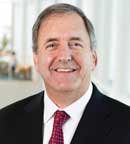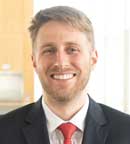Editor's note: This article is part of a series on the various practice models that ophthalmologists can choose to work in. See "Academic vs Private Practice for the Ophthalmologist" and "Starting a Practice, With a Little Help" for more.
Vance Thompson Vision (VTV) consists of 14 surgeons and 18 optometrists, and its seven locations span South Dakota, North Dakota, Nebraska, Montana and Minnesota.
Our practice, founded 32 years ago by Vance Thompson, MD, expanded to additional regions in the last 10 years. One might think a transition from one site to seven came as calculated steps of a larger strategy, but the roots of our growth are much more organic. We began an anterior segment fellowship in 2014. Shortly after, we began falling in love with our fellows, and our fellows began falling in love with us. Since, it’s been a lot of “right person over right timing” situations that have turned us into a large organization in the upper Midwest/Mountain west.
VTV is a unique practice in many ways, and we hope giving a glimpse into a few things we deem important will enlighten you to the highlights of practicing in a setting like ours.
Labors of love
Growth has required our practice to change in many ways; two that are worth noting:
- Structure vs. love. As a smaller practice our mantra was “love over structure.” It was simpler to get a team of 30+ people, compared to now 400+, rowing in the same direction without as much structure. As we grew, to facilitate streamlined decision making by ensuring the right person was told the right information at the right time (and of course to limit emails and meetings), we’ve since changed our mantra to “structure to allow love” as the need for more structure naturally increased. Ultimately, we strive to never let structure get in the way of love and to be a grass roots organization by encouraging our team to solve problems at the source while also equipping them with a well-defined team to help them do so.
- Freedom vs. harmony. A smaller practice often allows for more independence in one’s practice pattern and how the business/clinic/surgery center are run. Any discussion at VTV often includes opinions of 14 surgeons (plus 11 more opinions when our executive leadership team and executive site directors are involved — which they often are — and even more when optometrists and other managers weigh in). We’ve quickly learned the complexity, confusion and extra work that stem from solving problems 14 different ways. As much as we can, we try to harmonize our decision making. We often can be heard quoting “In the essential unity, in the non-essential liberty, and in all things charity.”
Consistency across locations
While all surgeons have their preferences, it’s important that we align with those in our other locations as much as possible. This helps to create a consistent experience for patients while also avoiding unnecessary complexity for our referring optometrists.
An example can be something as simple as postoperative drops. At the end of surgery, we do a combination steroid-antibiotic injection, then we prescribe a compounded combination drop postoperatively. If another location handled drops differently, it would be very confusing for our referring optometrists, who play a significant role in setting patient expectations prior to surgery. If this creates confusion for their team and they don’t know what to tell their patients, they may choose to just not refer to us.
Communication
At VTV, we understand the importance of making sure everyone is on the same page and heard. This is why our teams have a good cadence of meetings. Those include meetings for the surgeon group, directors, leadership, marketing team, finance, and more.
To get the most out of those meetings and to maximize eveyrone’s time, we have an agenda that is sent with the meeting invite to allow people to prepare for the discussions. We also include prerecorded video presentations, which are followed by brief discussion periods. That allows us to maximize our time and eliminates the chance of having interruptions during the most crucial periods of the meetings.
Without that setup, meeting times can easily balloon. This setup only becomes more important as the number of people and sites that are involved in that meeting increase.
Foundational Beliefs
Our core
We lean into the structure and harmonize around decision making, because we’re all bought in to a few well-defined core beliefs. Succinctly articulating these early in the process of bringing a new surgeon or leader into the fold is critical. For example, we want doctors, business leaders and staff who care deeply about their fellow person, which we believes translates into a great work environment.
We can also rally around our core foundational beliefs when it comes time to make decisions that impact the practice. For instance, if physicians are on two different sides of an issue, it is easier to “break the tie” if we look at which side sticks closest to our core beliefs, such as delivering the best patient experience.
We take the hiring process very serious so that we add people who have a servant heart in their personal lives that helps so much in our professional journey. Our robust hiring process involves multiple rounds of interviews, which involve our people and culture team in addition to our surgeons. In this way, we’re naturally screening for people who we don’t believe will be a good fit with our system and core beliefs. A few of our core beliefs: delivering the best people experience, investing in the world’s best technology and having a practice that fosters collaborative care.
Delivering the best people experience
We feel the key to a great patient experience starts with a great team experience. We have a saying that we believe to be at the core of the people experience in our practice: “The team that loves and cares for each other will create an environment where the patient feels loved and cared for.”
The lifeblood pumping through the arteries of our organization is our goal to deliver the best possible team and patient experience that we can. Some of our strategies include:
- Morning huddles where the team can spend some time together, talk about anything special happening that day, such as industry updates.
- Reading books such as “The Experience Economy” and “Secret Service” and studying other businesses that have mastered the people experience.
- Working hard on training so that the team feels comfortable with their role in our practice.
- Using terminology like work family, work sisters and work brothers.
- Allowing our team to spend money to buy flowers or other gifts that resonate with the patient. If a patient tells us they are having a tough day because of the loss of a loved one, flowers showing up at their home are a wonderful way to show them how much we care.
- Since we are not perfect, we take patient complaints very seriously. We not only deal with the issue at hand in a way that helps the patient know we are listening, but we also use that feedback to work on refining our experience to minimize the chance of that issue happening again.
- Warm cookies baking in the well-kept atrium make it smell like they are walking in to their grandmother’s kitchen.
- Having a fun environment that involves lots of dad jokes and organize activities regularly after work that often involve our teams’ loved ones.
Studying together the ways to optimize our team and patient experience is what we call “The Science of Nice,” and it serves to differentiate our brand across all locations as one that cares deeply for the patient and makes it a rewarding place to work. This involves investing time and effort into our patient experience, but it also helps the patient and their caretaker feel special. In addition, it is fun, rewarding and makes coming to work fun, which we believe is the main reason for our low turnover.
Investing in the best technology
We love technology that makes a meaningful impact in the lives of our patients and team. Within medicine, ophthalmology has so much innovation that comes through the pipeline at an impressive pace, and we strive to have that technology so the patient receives the most up to date technology and care possible.
We invest in technology from the early phases by investing in our research team. We’re frequently involved in FDA clinical trials across all of our sites. Because of this, we’re often already comfortable with having a new technology in our hands years before it comes to market.
Collaborative care
We work closely with other providers within our practice and in our community to ensure patients get the absolute best care possible. If there’s a surgeon at another location who is better equipped to take care of a patient, it’s not uncommon for us to send the patient to them as long as it is reasonable for everyone. We also have frequent threads among surgeons and optometrists across our network where we can brainstorm and weigh in on various patient situations.
We collaborate with optometrists in our community as well, which involves efficient and quality communications. We take pride in delivering world-class education to facilitate this. Especially given our geographic setting, but even within the cities we practice, we believe that the relationships patients have with their primary doctors is sacred, and it’s a privilege when we get to participate in the surgical and medical eye care and deliver on the trust both patients and doctors put in us.
Conclusion
Our commitment to delivering an exceptional team and patient experience, investing in the best technology, performing quality research to further our profession, and fostering collaborative care ensures that we remain a leader in ophthalmic innovation and patient care in the regions our practices are located. As we continue to grow, our core values guide us in making a meaningful impact on our patients and team members. And no matter how large our practice grows, we feel that having a kind and caring environment for our team and patients is what leads to our practice growth. OM










